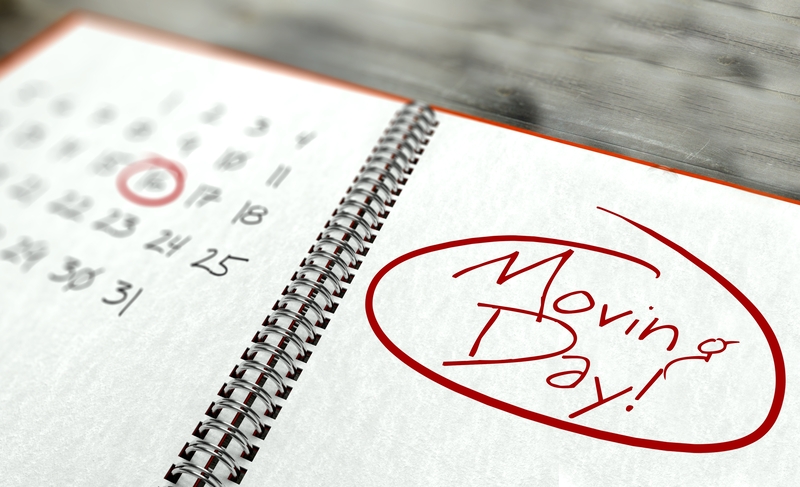Mastering the Art of Piano Moving: Pros and Cons of DIY
Posted on 28/05/2025
Mastering the Art of Piano Moving: Pros and Cons of DIY
Pianos are more than just musical instruments--they are heavy, intricate, and often cherished family heirlooms. If you're relocating or rearranging your home, you might be considering whether to move your piano yourself or hire professionals. Mastering the art of piano moving is not just about physical strength, but also planning, technique, and understanding the risks involved.
Understanding the Complexity of Piano Moving
Moving a piano is no ordinary task. These instruments are incredibly delicate on the inside and massive on the outside. The weight can range from 300 to 1,400 pounds depending on the size and type--upright or grand. But it's not just about weight. A piano's intricate mechanical structure contains thousands of moving parts that need to be protected from shocks and vibrations.
Types of Pianos and Their Moving Challenges
- Upright Pianos: Smaller and somewhat easier to maneuver, usually weighing between 300 and 500 pounds. They can, however, be top-heavy, making them prone to tipping over.
- Grand Pianos: Require part or full disassembly, as the legs, pedals, and often the lid need careful removal. They can weigh up to 1,400 pounds, making them extremely cumbersome.

Preparing for a DIY Piano Move
If you are considering a do-it-yourself piano move, preparation is key. Here's what you should consider:
Essential Tools & Equipment
- Piano dolly - A specialized moving dolly designed to support the weight and shape of your piano.
- Moving blankets or pads - To protect both the piano and your walls/floors from scratches and dings.
- Straps and harnesses - To secure the piano to the dolly and provide moving control.
- Work gloves - For a secure grip.
- Measuring tape - To ensure doorways and corridors are wide enough.
Planning the Route
Before you start, map out the entire route from the piano's original location to its destination:
- Measure all doors, stairs, and hallways.
- Remove any furniture, rugs, or obstacles in the path.
- Check for uneven floors or turns that require special maneuvering.
- Plan for elevators or ramps if needed.
The Pros of DIY Piano Moving
Cost Savings
The most obvious benefit of moving a piano yourself is saving money. Professional piano movers charge anywhere from $150 to $1,000, depending on the type of piano, distance, and obstacles. By opting for DIY, you're only responsible for equipment rental and a few helpers (perhaps bribing friends with pizza!).
Immediate Scheduling
Your schedule is your own. You don't have to wait for professional availability, making the move quicker--especially if you're on a tight deadline.
Satisfaction and Learning
There is also an undeniable sense of accomplishment in mastering the art of piano moving yourself. You gain valuable life experience and can take pride in completing such a challenging task.
Control Over Process
Nobody will care for your piano quite like you do. By moving it yourself, you maintain full control over every step and can take as much care as you wish.
The Cons of DIY Piano Moving
High Risk of Injury or Damage
The combination of extreme weight and awkward shape makes piano moving potentially dangerous. Risks include:
- Personal Injury: Back strains, crushed fingers, and trips/falls are common DIY moving injuries.
- Damage to Piano: Scratches, broken legs, detached pedals, or even catastrophic internal damage can result from improper handling.
- Property Damage: Dropped pianos can destroy floors, walls, and stairs.
Specialized Knowledge Required
Professional piano movers are trained in lifting, securing, and maneuvering these unique instruments. Lacking this expertise increases the risk of mistakes that beginners may not anticipate, like improper tilting, inadequate securing, or incorrect disassembly.
Equipment Costs and Logistics
While DIY is generally cheaper, equipment rental fees for piano dollies, straps, and moving blankets can add up. You'll also need a vehicle large enough for your piano. Not every van or truck will fit a grand piano, and loading one can be extremely tricky.
Lack of Insurance Coverage
Professional movers typically carry insurance that covers accidental damage to both your home and piano. In a DIY move, you're on your own -- and homeowner's insurance rarely covers personal moving mishaps.
Key Steps in DIY Piano Moving: How to Do It Safely
1. Assemble Your Moving Team
Pianos are never a one-person move. Gather at least 3-5 strong friends or family members, ideally with previous moving experience.
2. Protect the Piano
- Close and lock the keyboard lid to prevent internal damage.
- Wrap the piano fully in thick moving blankets and secure with tape or straps.
3. Lifting Technique
- Lift with your legs, not your back.
- Keep the piano upright at all times; tilting can damage the internal mechanisms.
4. Moving Through Doorways and Stairs
- Take it slow; communicate constantly with your team.
- If stairs are involved, one person should always support the bottom while others guide the top.
5. Secure Transportation
- Use a moving truck with a lift gate if possible.
- Anchor the piano to the truck's side rails to prevent shifting during transit.
6. Reassembling (for Grand Pianos)
- Reattach legs, lyre, and pedals carefully upon arrival.
- Allow the piano to acclimate to the new environment before tuning.
Piano Tuning: An Overlooked Aspect of Piano Moving
Even with perfect care, pianos will shift out of tune during a move due to the change in humidity, temperature, and minor jostling. Professional tuning is recommended at least two weeks after the piano is relocated.
DIY Piano Moving vs. Professional Services: A Side-By-Side Comparison
| Aspect | DIY Piano Moving | Professional Piano Movers |
|---|---|---|
| Cost | Low to moderate (equipment rental, friends) | Higher (labor, insurance, transport) |
| Risk | High (personal injury, damages) | Low (insured, experienced) |
| Convenience | Flexible timing | Scheduling required |
| Expertise | Relies on personal skill/learning | Specialized knowledge and tools |
| Equipment | Must rent or borrow | Provided by service |
| Insurance | Rarely included | Usually included |
Tips for Safe and Effective DIY Piano Moving
- Always inspect your equipment for damage before use.
- Don't rush--take breaks if needed to avoid fatigue-related mistakes.
- Keep children and pets away during the move.
- Have a backup plan if the move proves too difficult partway through.
- If in doubt, call for professional help before proceeding.
When Should You Never Attempt DIY Piano Moving?
- Moving upstairs/downstairs more than a few steps.
- Grand pianos in tight spaces.
- Lack of enough helpers or appropriate equipment.
- Valuable, antique, or sentimental instruments.
- Long distance or over tricky terrain.
The Verdict: Should You Move Your Piano Yourself?
To master the art of piano moving on your own, you need careful planning, the right tools, and a commitment to safety. DIY piano moving can be cost-effective and satisfying, but it carries significant risks to your health, your property, and your musical investment.
If you are confident in your preparation, have a solid team, the proper equipment, and the move's complexity is manageable--DIY piano moving is possible. For anything more complicated or if your piano holds substantial financial or sentimental value, hiring professional piano movers is the wisest choice. Ultimately, consider what matters most: saving money or protecting what matters most to you.

Frequently Asked Questions About Piano Moving
Do I need to disassemble my piano before moving?
Grand pianos should be partially disassembled (legs, pedals, and lid) for safe transport. Upright pianos generally do not require disassembly but must be properly secured.
How much does it cost to rent piano moving equipment?
A piano dolly can cost between $25-$50 per day, moving blankets around $10 each, and heavy-duty straps about $15-$30.
Will moving my piano affect the sound?
Small shifts in tuning are likely. Wait at least two weeks after moving before having it professionally tuned, so the instrument can acclimatize to its new space.
What if my piano won't fit through the door?
Carefully measure all doorways before starting. In some cases, you may need to temporarily remove doors from hinges or hire professionals for partial disassembly.
Conclusion
Mastering the art of piano moving is a blend of strength, planning, patience, and respect for your instrument. Whether you choose the DIY route or professional help, knowing the pros and cons enables you to make the best decision for your situation. Remember: when in doubt, the safety of your piano--and yourself--should always come first.
If you found this guide useful, share it with fellow music lovers considering a move, and let us know your own piano moving experiences in the comments below!
```


